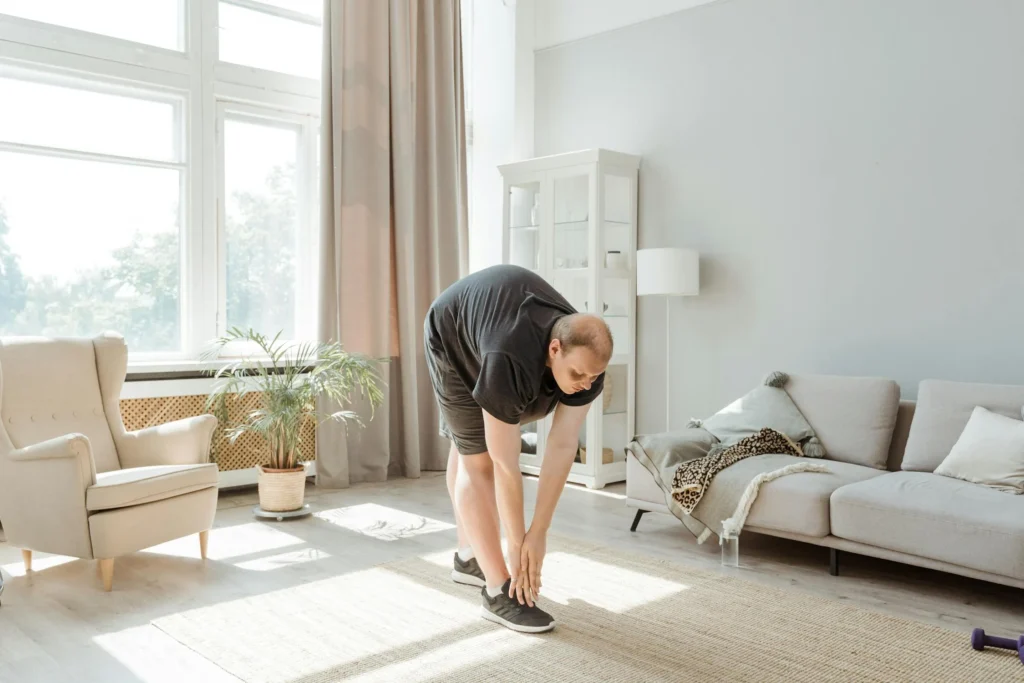Physical activity isn’t just about sculpted abs or fitting into your favorite jeans. It’s the cornerstone of a healthy and fulfilling life, impacting everything from your mood and sleep to your risk of chronic diseases and longevity. This blog post will delve deep into the importance of physical activity, exploring its multifaceted benefits, providing guidelines for different age groups, addressing common misconceptions, and offering practical tips for incorporating movement into your daily routine.

Defining Physical Activity: More Than Just Exercise
It’s crucial to distinguish between physical activity and exercise. While often used interchangeably, they are not the same:
- Physical Activity: Any bodily movement produced by skeletal muscles that results in energy expenditure. This broad category includes everything from walking and gardening to dancing and playing sports.
- Exercise: A subcategory of physical activity that is planned, structured, repetitive, and purposeful in the sense that it aims to improve or maintain one or more components of physical fitness.
Essentially, all exercise is physical activity, but not all physical activity is exercise. This distinction is important because it highlights that even small amounts of movement throughout the day can contribute significantly to your overall health.
The Myriad Benefits of Physical Activity: A Holistic Approach
The benefits of regular physical activity are extensive and well-documented. They span across physical, mental, and social well-being:
1. Physical Health Benefits:
- Cardiovascular Health: Regular physical activity strengthens the heart muscle, improves circulation, lowers blood pressure, and reduces the risk of heart disease, stroke, and other cardiovascular events.
- Weight Management: Physical activity helps burn calories, build muscle mass, and boost metabolism, contributing to healthy weight management and reducing the risk of obesity.
- Musculoskeletal Health: Weight-bearing activities strengthen bones, improve muscle strength and endurance, and reduce the risk of osteoporosis, fractures, and falls.
- Improved Sleep: Regular physical activity can improve sleep quality, making it easier to fall asleep, stay asleep, and wake up feeling refreshed.
- Reduced Risk of Chronic Diseases: Physical activity significantly lowers the risk of developing type 2 diabetes, certain types of cancer (colon, breast, endometrial), arthritis, and other chronic conditions.
- Increased Longevity: Studies have shown that physically active individuals tend to live longer and have a lower risk of premature death.
- Improved Immune Function: Regular exercise can strengthen the immune system, making you less susceptible to infections and illnesses.
- Enhanced Balance and Coordination: Activities like yoga, tai chi, and dance can improve balance and coordination, reducing the risk of falls, especially in older adults.
2. Mental Health Benefits:
- Mood Boost: Physical activity releases endorphins, which have mood-boosting effects and can reduce symptoms of anxiety and depression.
- Stress Reduction: Exercise can be a healthy way to cope with stress, reducing the levels of stress hormones in the body.
- Improved Cognitive Function: Physical activity can enhance cognitive function, including memory, attention, and decision-making.
- Increased Self-Esteem: Achieving fitness goals and feeling physically stronger can boost self-esteem and confidence.
- Reduced Risk of Depression: Regular physical activity is a powerful tool in preventing and managing depression.
3. Social Benefits:
- Social Connection: Participating in team sports, group fitness classes, or simply exercising with a friend can provide opportunities for social interaction and connection.
- Improved Relationships: Engaging in physical activities with family members can strengthen bonds and create shared experiences.
- Community Involvement: Joining local sports leagues or fitness groups can foster a sense of community and belonging.
Physical Activity Guidelines: Finding Your Fit
The amount of physical activity recommended varies depending on age, health status, and individual goals. Here are some general guidelines:
For Adults (18-64 years):
- Moderate-intensity aerobic activity: At least 150 minutes per week (e.g., brisk walking, cycling, swimming).
- Vigorous-intensity aerobic activity: At least 75 minutes per week (e.g., running, jogging, high-intensity interval training).
- Combination of moderate and vigorous activity: An equivalent combination of both.
- Muscle-strengthening activities: At least 2 days per week (e.g., lifting weights, using resistance bands, bodyweight exercises).
For Older Adults (65+ years):
- Follow the same guidelines as for adults, with modifications as needed based on health conditions and physical limitations.
- Focus on activities that improve balance and coordination, such as tai chi or yoga.
For Children and Adolescents (6-17 years):
- At least 60 minutes of moderate-to-vigorous physical activity daily, mostly aerobic.
- Muscle-strengthening and bone-strengthening activities at least 3 days per week.
Important Considerations:
- Start slowly and gradually increase the intensity and duration of your workouts.
- Listen to your body and rest when you need to.
- Consult with your doctor before starting any new exercise program, especially if you have any underlying health conditions.
Overcoming Barriers to Physical Activity: No More Excuses
Many people face barriers to engaging in regular physical activity. Common excuses include lack of time, lack of motivation, fear of injury, and lack of access to facilities. However, with a little creativity and planning, these barriers can be overcome:
- Lack of Time: Schedule physical activity into your day like any other important appointment. Even short bursts of activity (10-15 minutes) can add up.
- Lack of Motivation: Find activities you enjoy and that fit your lifestyle. Exercise with a friend or join a group fitness class for added motivation.
- Fear of Injury: Start slowly and gradually increase the intensity of your workouts. Choose activities that are low-impact and appropriate for your fitness level.
- Lack of Access to Facilities: There are many ways to be physically active without a gym membership. Walking, running, cycling, and bodyweight exercises can all be done outdoors or at home.
Making Physical Activity a Habit: Small Changes, Big Impact
Incorporating physical activity into your daily routine doesn’t require drastic changes. Start with small, manageable steps and gradually build from there:
- Take the stairs instead of the elevator.
- Walk or cycle for short distances instead of driving.
- Stand up and move around every 30 minutes if you have a desk job.
- Park further away from the entrance of stores or buildings.
- Find active hobbies you enjoy, such as dancing, gardening, or hiking.
- Incorporate movement into your workday, such as walking during your lunch break.
The Importance of Variety: Keeping Things Interesting
Engaging in a variety of physical activities is important for overall health and fitness. It helps to prevent injuries, work different muscle groups, and keep things interesting. Consider incorporating a mix of:
- Cardio: Activities that elevate your heart rate, such as running, swimming, or cycling.
- Strength training: Activities that build muscle mass and strength, such as lifting weights or using resistance bands.
- Flexibility exercises: Activities that improve range of motion, such as stretching or yoga.
- Balance exercises: Activities that improve balance and coordination, such as tai chi or Pilates.
Physical Activity Throughout the Lifespan: Adapting to Changing Needs
The importance of physical activity remains constant throughout the lifespan, but the types and intensity of activities may need to be adjusted based on age, health status, and life stage.
- Childhood and Adolescence: Physical activity is crucial for healthy growth and development, building strong bones and muscles, and establishing healthy habits for life.
- Adulthood: Regular physical activity helps maintain health, prevent chronic diseases, and improve overall well-being.
- Older Adulthood: Physical activity helps maintain functional independence, prevent falls, and manage age-related health conditions.
Conclusion: Move Your Body, Transform Your Life
Physical activity is not just a recommendation; it’s a necessity for a healthy and fulfilling life. From improving your physical and mental health to enhancing your social connections and increasing your longevity, the benefits of regular movement are undeniable. By making physical activity a non-negotiable part of your daily routine, you can transform your life in countless ways. It’s not about achieving perfection; it’s about embracing movement, finding joy in activity, and reaping the rewards of a healthier, happier you. So, get moving! Your body and mind will thank you for it.





Leave a Reply
You must be logged in to post a comment.